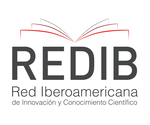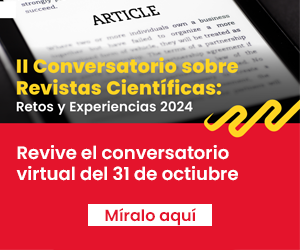Tendencias de la frecuencia de obesidad en mujeres en edad fértil. Estudio basado en la Encuesta Demográfica y de Salud Familiar-ENDES, Perú, 2005-2018
DOI:
https://doi.org/10.20453/rmh.v35i1.5296Palabras clave:
Salud de la mujer, Perú, obesidadResumen
Objetivo: Describir las tendencias de la frecuencia de obesidad y su relación con algunos factores socioeconómicos en mujeres en edad fértil en el Perú. Material y métodos: Estudio transversal de datos secundarios, analítico utilizando las bases de datos de la Encuesta Nacional Demográfica en Salud (ENDES) de los años 2005 a 2018. Se estimó la frecuencia de mujeres con obesidad para cada año y se las comparó mediante los intervalos de confianza al 95% (IC95%). Se comparó la magnitud de asociación de lugar, edad y paridad, lugar de residencia, grado de educación e índice de riqueza. Resultados: Se observó un aumento de la obesidad en mujeres en edad fértil de 17,72% (IC95%: 16,24-19,32) en el 2005 a 32% (IC95%: 30,46-34,42) en el 2018. La prevalencia de obesidad tipo I aumentó de 9,07% (IC95% 8,09-10,16) en el año 2005 a 22,15% (IC95% 15,19-16,48) en el 2018. Se observó un aumento continuo en la prevalencia de obesidad tipo II de 2,34% (IC95% 1,84-3,05) a 7,29% (IC95% 3,75-4,52). En las mujeres que se encontraron embarazadas al momento de la entrevista se encontró una prevalencia de obesidad de 17,21% (IC95% 11,42-25,10) en el año 2005 llegando a 38,61% (IC95% 20,25-28,46) en el año 2018. Se encontró relación significativa de la posibilidad de ser obesa con la edad y la paridad. Conclusiones: La prevalencia de obesidad en las mujeres en edad fértil en nuestro país es alta y continúa incrementando con el tiempo. La prevalencia incrementada se presenta igualmente en gestantes, incrementando las complicaciones materno-perinatales.
Descargas
Citas
Hoppe W. Tendencias de obesidad en mujeres en edad fértil. Estudio poblacional basado en la ENDES, Perú, 2005-2015. [Tesis de Maestría]. Lima: Universidad Peruana Cayetano Heredia; 2021 [citado 17 de septiembre de 2022]; Disponible en: https://repositorio.upch.edu.pe/handle/20.500.12866/11225
World Health Organization. The Global Health Observatory [Internet]. WHO. [citado 4 de junio de 2018]. Disponible en: http://www.who.int/gho/mortality_burden_disease/en/
Global, regional, and National comparative risk assessment of 84 behavioural, environmental and occupational, and metabolic risks or clusters of risks, 1990–2016: a systematic analysis for the Global Burden of Disease Study 2016. Lancet [Internet]. [citado 4 de junio de 2018]. Disponible en: https://www.thelancet.com/journals/lancet/article/PIIS0140-6736(17)32366-8/fulltext
Lozano R, Gómez-Dantés H, Garrido-Latorre F, Jiménez-Corona A, Campuzano-Rincón JC, Franco-Marina F, et al. La carga de enfermedad, lesiones, factores de riesgo y desafíos para el sistema de salud en México. Salud Publica Mex. diciembre de 2013;55(6):580-94.
Whitelaw DC, O’Kane M, Wales JK, Barth JH. Risk factors for coronary heart disease in obese non-diabetic subjects. Int J Obes. julio de 2001; 25(7):1042.
Manson JE, Willett WC, Stampfer MJ, Colditz GA, Hunter DJ, Hankinson SE, et al. Body Weight and Mortality among Women. N Engl J Med. 14 de septiembre de 1995;333(11):677-85.
Stoll BA. Teenage obesity in relation to breast cancer risk. Int J Obes. noviembre de 1998; 22(11):1035-40.
McLaughlin T, Abbasi F, Kim HS, Lamendola C, Schaaf P, Reaven G. Relationship between insulin resistance, weight loss, and coronary heart disease risk in healthy, obese women. Metabolism. julio de 2001; 50(7):795-800.
Manrique H. Impacto de la obesidad en la salud reproductiva de la mujer adulta. Rev Per Ginecol Obstet. octubre de 2017;63(4):607-14.
Zain MM, Norman RJ. Impact of obesity on female fertility and fertility treatment. Womens Health (Lond). marzo de 2008;4(2):183-94.
Kiddy DS, Hamilton-Fairley D, Bush A, Short F, Anyaoku V, Reed MJ, et al. Improvement in endocrine and ovarian function during dietary treatment of obese women with polycystic ovary syndrome. Clin Endocrinol (Oxf). enero de 1992;36(1):105-11.
Aguilar-Cordero MJ, Baena García L, Sánchez-López AM. Obesidad durante el embarazo y su influencia en el sobrepeso en la edad infantil. Nutr. Hosp. 2016; 33:18-23.
Fitzsimons KJ, Modder J, Greer IA. Obesity in pregnancy: risks and management. Obstet Med. junio de 2009; 2(2):52-62.
Farías M. Obesidad materna: severo problema de salud pública en Chile. Rev Chil Obstet Ginecol. 2013; 78(6):409-12.
Poterico JA, Stanojevic S, Ruiz P, Bernabe-Ortiz A, Miranda JJ. The Association between Socioeconomic Status and Obesity in Peruvian Women. Obesity (Silver Spring). noviembre de 2012; 20(11):2283-9.
Diez-Canseco F, Saavedra-Garcia L. Programas sociales y reducción de la obesidad en el Perú: reflexiones desde la investigación. Rev Peru Med Exp Salud Publica. 23 de marzo de 2017; 34(1):105-12.
PERÚ Instituto Nacional de Estadística e Informática [Internet]. Encuesta Demográfica y de Salud Familiar-ENDES. [citado 17 de septiembre de 2022]. Disponible en: https://proyectos.inei.gob.pe/endes/
Instituto Nacional de Estadística e Informática. Encuesta Demográfica y de Salud Familiar. Diseño muestral [Internet]. Disponible en: https://proyectos.inei.gob.pe/endes/recursos/endes2008_disenomuestral.pdf
CDC. Centers for Disease Control and Prevention. 2022 [citado 25 de febrero de 2024]. Defining Adult Overweight and Obesity. Disponible en: https://www.cdc.gov/obesity/basics/adult-defining.html
Obesity in Pregnancy: ACOG Practice Bulletin, Number 230. Obstet Gynecol. 1 de junio de 2021; 137(6):e128-44.
Lisonkova S, Muraca GM, Potts J, Liauw J, Chan WS, Skoll A, et al. Association Between Prepregnancy Body Mass Index and Severe Maternal Morbidity. JAMA. 14 de noviembre de 2017; 318(18):1777-86.
The Lancet Gastroenterology Hepatology. Obesity: another ongoing pandemic. Lancet Gastroenterol Hepatol. 2021 Jun; 6(6):411. doi: 10.1016/S2468-1253(21)00143-6.
World Health Organization. Controlling the global obesity epidemic [Internet]. [citado 17 de septiembre de 2022]. Disponible en: https://www.who.int/activities/controlling-the-global-obesity-epidemic
Pineda Soto VI, del Socorro Estrada Oré EL. Comparación de tres modelos de etiquetado nutricional frontal de productos industrializados en Perú, 2019. Perspect Nut Hum. junio de 2020; 22(1):35-45.
Ministerio de Salud. Decreto Supremo que aprueba el Reglamento de la Ley N° 30021, Ley de Promoción de la Alimentación Saludable. Decreto Supremo N° 017-2017-SA. [Internet]. [citado 17 de septiembre de 2022]. Disponible en: http://busquedas.elperuano.pe/normaslegales/decreto-supremo-que-aprueba-el-reglamento-de-la-ley-n-30021-decreto-supremo-n-017-2017-sa-1534348-4/
Angelantonio ED, Bhupathiraju SN, Wormser D, Gao P, Kaptoge S, Gonzalez AB de, et al. Body-mass index and all-cause mortality: individual-participant-data meta-analysis of 239 prospective studies in four continents. Lancet. agosto de 2016; 388(10046):776-86.
Chu SY, Bachman DJ, Callaghan WM, Whitlock EP, Dietz PM, Berg CJ, et al. Association between obesity during pregnancy and increased use of health care. N Engl J Med. abril de 2008; 358(14):1444-53.
Publicado
Cómo citar
Número
Sección
Licencia
Derechos de autor 2024 Revista Médica Herediana; Wolfgang Hoppe , Carlos Hidalgo

Esta obra está bajo una licencia internacional Creative Commons Atribución 4.0.
Los autores ceden sus derechos a la RMH para que esta divulgue el artículo a través de los medios que disponga. Los autores mantienen el derecho a compartir, copiar, distribuir, ejecutar y comunicar públicamente su artículo, o parte de él, mencionando la publicación original en la revista.

















